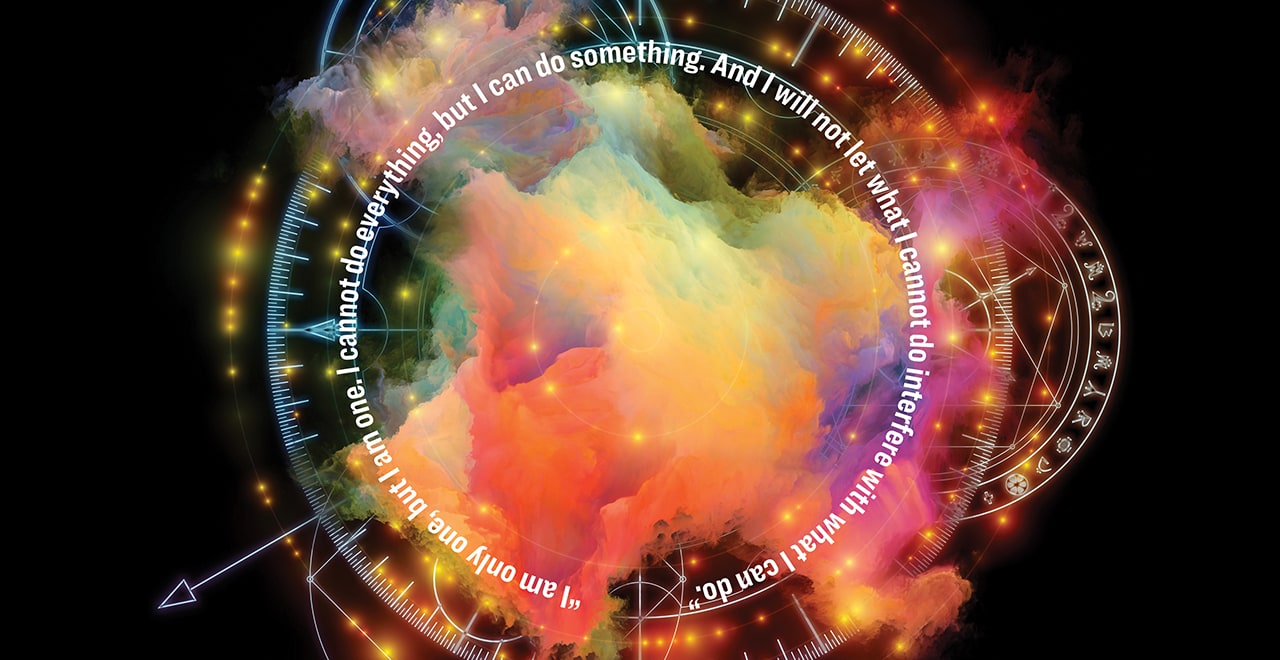
The Alchemy of Informal Teams
Wednesday, April 12, 2023
I am a gastroenterologist with an MBA. I am also trained in health and wellness coaching and health equity. Over the course of my career, I have been a stakeholder in most segments of the healthcare arena, including first and foremost, as a practicing physician. Although medical training is evolving, it is still frequently a singular pursuit of knowledge and excellence … until the importance and necessity of a collective effort is factored in — when students, residents and fellows are faced with the actual delivery of care, particularly in the inpatient setting.
In business school, one learns early the criticality of a team getting through the curriculum and delivering on projects that can stand out in the crowd.
Each approach has its pros and cons, but in a world in which organizations are often siloed, a combination of the two approaches — both an individual effort and working collaboratively as a team — means more things can get done more efficiently and with better outcomes. Hence, the “alchemy” of an informal team.
What is Alchemy
According to Merriam-Webster, alchemy is “a power or process that changes or transforms something in a mysterious or impressive way.”
“Never underestimate the power of a small group of committed people to change the world. In fact, it is the only thing that ever has.” – Margaret Mead
In this case, the process involves an informal, interdisciplinary and diverse team:
- Driven not by hierarchy or reporting lines but by a passion for the mission.
- Whose skills are optimally harnessed and talents have been given the freedom of expression.
- Presented with the opportunity for members to imbed their ideas in the strategy and to help implement an action plan that represents the culmination of energy and creativity of the collective.
How Does It Work?
The recipe is complex. But the ingredients are readily available, IF (1) you look for them with intention and (2) have a clearly communicated mission that provides a sense of purpose and enables team members to feel their contributions truly make a difference. They are:
- Passion
- Talent
- Diversity (skills, area and level within the organization, tenure, age, gender, race/ethnicity, lifelong learners, introvert/extrovert and willingness to lead and follow)
- Innate collaborative spirit
- “Make It Happen” orientation
- “Mistake” = learning opportunity and wisdom for the future
- Willingness to pivot based on data, obstacles and opportunities
- Sense of urgency, tempered with the patience needed to persevere amidst the bureaucracy and resistance to change often manifest in large organizations
- Celebration of successes, both large and small
- Success = doing the most good possible for as many people as possible in a sustainable way without compromising values and integrity
- Ongoing end-user feedback
- Trust
Why Does It Work?
I have discovered several things to be true in almost every setting and role I have experienced.
First, the vast majority of people in the healthcare arena are dedicated, passionate, mission-driven, and focused on patients, members and consumers.
Additionally, they will often go above and beyond to do right by those in their charge.
The system works better when they are in decision-making positions.
All people are leaders in their own way, if they choose to be.
We are surrounded by talent that all too often goes unrecognized but is amazing to behold when the opportunity to share it is provided.
The system works better when those talents are tapped.
There almost always seems to be an insufficient degree of alignment between (1) the work to be accomplished and the desired outcomes thereof and (2) the staffing levels and budget allocated to get the job done.
Expectations are set and goals are often determined and assigned at higher levels within an organization without an ample understanding of or appreciation for the gap between the targets to be hit and the resources required to do so.
The system works better when reality reigns rather than overexuberant (and sometimes seemingly magical thinking) assumptions of how few resources are needed.

How Well Does It Work?
Because members of the team have consciously chosen to take on extra work while already having full plates, the energy of the group is different from the start. It serves as a catalyst for a collaborative dynamic focused on common goals in the service of others.
An informal team driven by passion and purpose also helps cut down on drama, politics, and personal agendas, which can waste time, distract from the effort needed to get the job done, and lead to burnout.
I have had the opportunity to use this model on a vast array of projects and initiatives. In many situations, this approach was the only option available to move forward and address unmet needs in the face of limited resources and prioritization decisions often rooted in a shorter-term outlook than one that ultimately might reap the greatest benefit for the most people.
“It is not your responsibility to complete the work of fixing the world, but neither may you stop trying.” – Ethics of the Fathers 2:21
In each instance, I believe the end result has turned out to be more robust, more inclusive and more consistently person-focused throughout the process of design and development than would otherwise have been the case. The programming has been positioned for enhancements that can address evolving needs and optimally deploy any future resource allocations. The outcomes have also been sustainable.
The “return on investment” for members of the team have been the opportunity to work with others across the organization, to learn new skills, to pursue career interests and to build relationships that likely would not have developed organically.
Participants have also been given the chance to take on responsibilities in a safe environment in which:
- Sharing ideas and expertise is not only expected but welcomed.
- Asking questions is considered key to identifying barriers and hidden points of leverage.
- Being transparent and “over”- communicating are prerequisites to everyone being in the loop and seeing the puzzle pieces that need to be connected for the big picture to emerge.
- Detours are stepping stones to lessons learned and elements of a playbook for future endeavors.
Many “founding members” have “reenlisted” to contribute to other projects and initiatives I lead and also recruited colleagues to these experiences.
So, What’s The Catch?
Don’t get me wrong. Having adequate resources beat not having enough of them, 100 percent of the time!
And using the informal team approach has its own unique complexity.
It requires an inherent “make it happen” team mindset and a willingness to operate outside the lines of a hierarchical infrastructure and culture. For some, that may initially feel uncomfortable or “too good to be true” to be trusted.
An additional layer of project management also comes with the territory.
Lastly, being in constant recruitment (and retention) mode is an absolute necessity. Members of the team move to other departments, operate with seasonal workloads, are called to absorb the deliverables of those who leave the organization (or whose positions were eliminated).
Or they get a new leader who does not support their participation in activities other than their “day job,” and who doesn’t view such opportunities as a pathway to personal and career growth and development.
My Conclusion
We live in a world of uncertainty, uneasiness and fear, PTSD-inducing events, division on a panoply of issues, growing insensitivity to acts of inhumanity, a frequent deficit of common decency and simple courtesy, and growing threats of conflict, as well as actual war and constant change.
Global connection and interdependence, as well as rapidly growing inequities in health, wealth and opportunity, have never been viewed more clearly by more people.
Challenges of this breadth and depth have not been seen at this level of scale in history.
Callout: “Do what you can, with what you’ve got, where you are.” – Squire Bill Widener (apparently not Teddy Roosevelt)
The mantra “Do (even) more with (even) less” seems to be etched in stone. But, at the end of the day, failure to act is in no way an option. And amid what is frequent chaos, the opportunity to get things done and solve problems indeed remains.
Passion, creativity, mission and a sense of purpose offer a path to drive crucial work that can make all the difference. The alchemy of an informal team means all is not lost and that there are options.
This article originally appeared in the Spring 2023 issue of In the Lead magazine, from The Stillman School of Business and its Business Leadership Center. The bi-annual magazine focuses on leadership perspectives from the field of health care, with content that is curated from leaders across the industry who share lessons learned from real-world experiences.
Categories: Business

